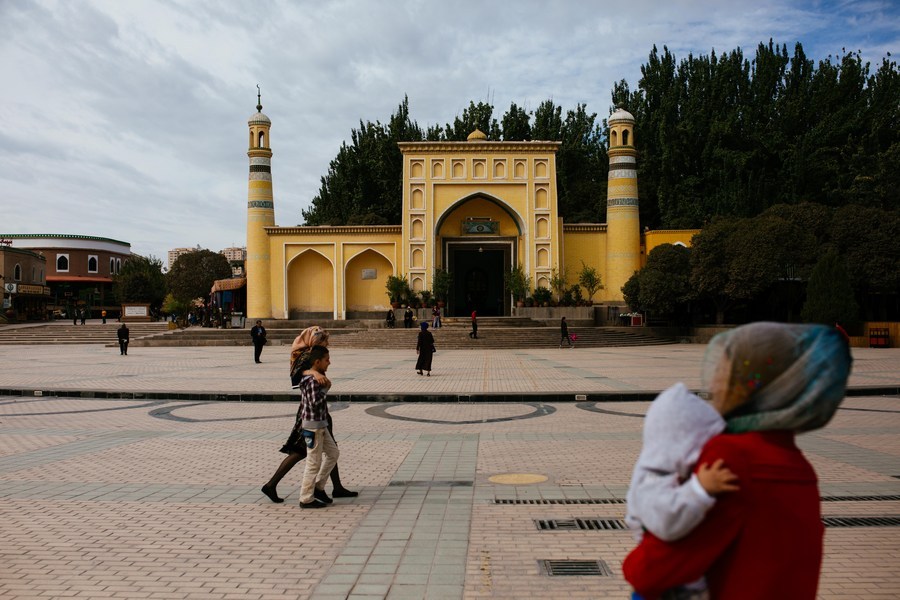
Pedestrians walk past the Id Kah Mosque in Kashgar, northwest China's Xinjiang Uygur Autonomous Region, Sept. 20, 2015. (Photo: Xinhua)
The imam of a major mosque in China's Xinjiang Uygur Autonomous Region has refuted a U.S. claim that the welcome plaque of the mosque has disappeared.
The plaque, originally hung over the entrance of the Id Kah Mosque in Kashgar, southern Xinjiang, has been put on an outer wall of the main prayer hall inside the mosque after repair works, said Memet Jume, imam of the mosque with a history of more than 500 years.
The U.S. embassy in China recently alleged on its Twitter account that the historic Id Kah Mosque's welcome plaque with a history of over 100 years is gone.
"The U.S. allegation does not accord with the facts," said Memet Jume. The welcome plaque, 2.7 meters long and 1.3 meters wide, was made and put into use in 1982.
The characters and patterns on the plaque had faded and sustained damage due to years of exposure to wind and the sunshine, he said. In 2017, the plague was renovated together with other facilities in the mosque.
The renovated plaque was moved to its current place with a large canopy to keep it from being exposed to the weather, he explained.
Thanks to the support of the government, the well-equipped mosque boasts air-conditioners, stable supply of hot water, electricity, telecommunication facilities and firefighting equipment, among others, the imam said.
The Id Kah Mosque was listed as a key national cultural relics unit in 2001. Four major renovations have been carried out for the mosque, with the latest in 2011 when the Chinese government invested 11 million yuan (about 1.58 million U.S. dollars) for overall repair works while keeping its original appearance.
"Today, the mosque is bright and tidy, warm in winter and cool in summer. It is very comfortable for devotees to attend religious service in the mosque," said Memet Jume.


